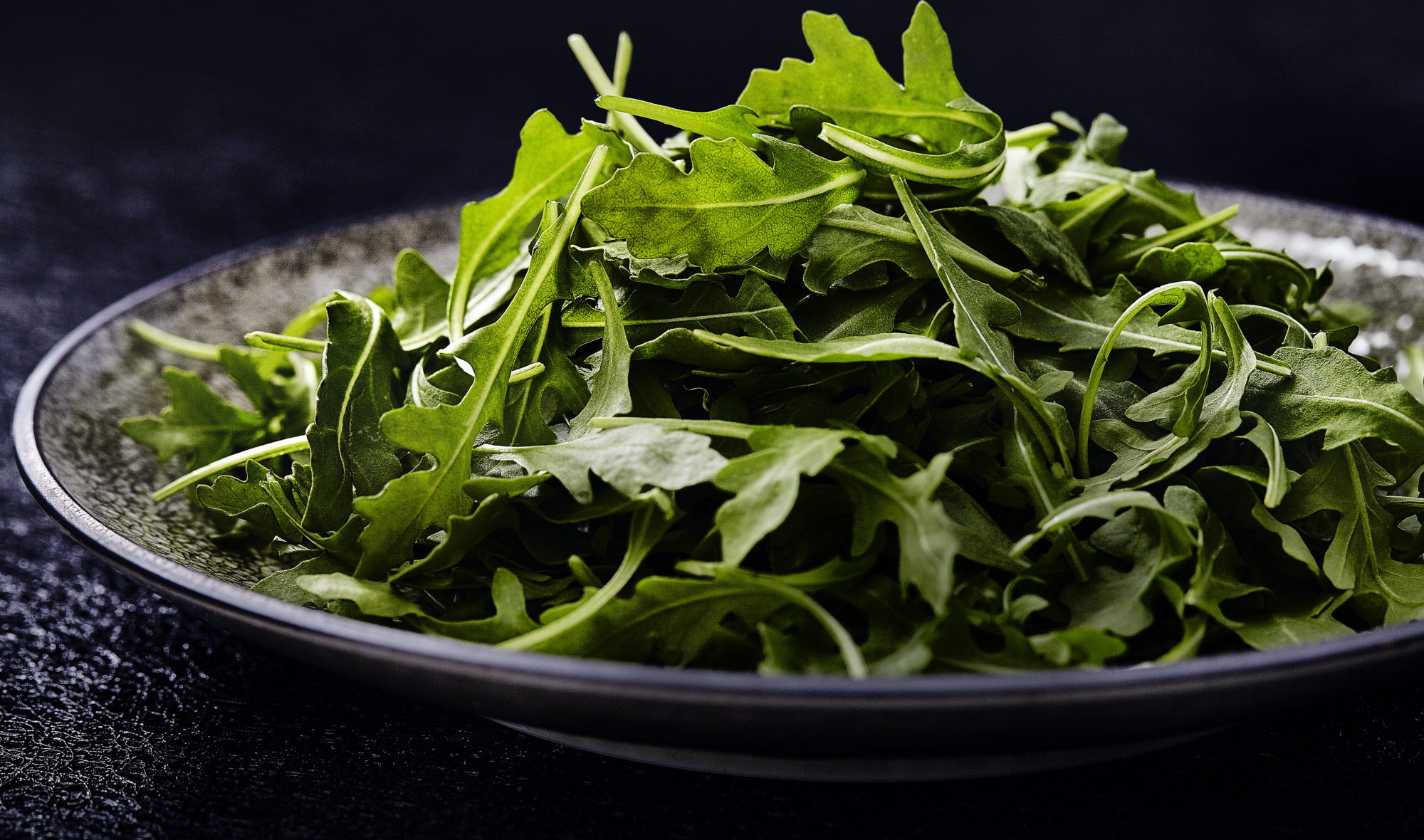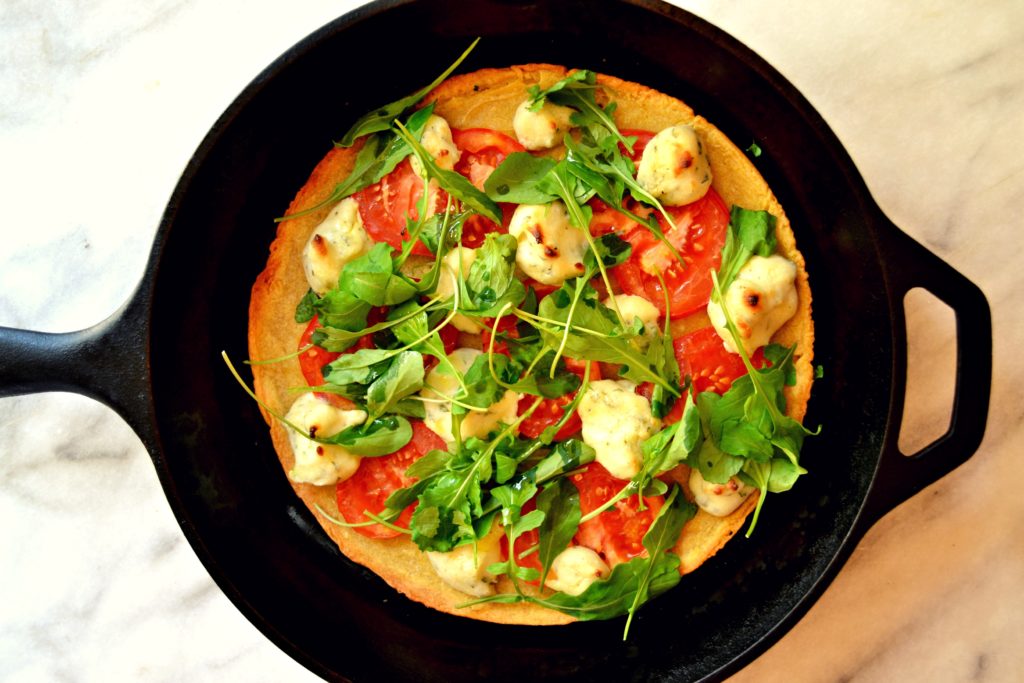
🎁 Holiday Special: SAVE 52% on the Nutrition Coach Starter Package. Limited number remaining.

🎁 Holiday Special: SAVE 52% on the Nutrition Coach Starter Package. Limited # left.

Arugula, spicy in both flavor and historical significance, is a member of the Brassica family. In Ancient Rome, arugula was considered an aphrodisiac and was forbidden from being grown in the monastic gardens of the Roman Catholic Church. Arugula looks like a small, narrow oak leaf and tastes fresh and peppery, with notes of mustard. Arugula is typically eaten raw and is very nutritious, possessing rich amounts of vitamin A, vitamin K, folate, and vitamin C. Eat arugula as a bold base to a salad or topped on your pizza like the Italians.
Think we’re talking about another boring salad green?
Think again.
Arugula has a spicy, pungent flavor, and an even spicier past.
Originating from the Mediterranean region, arugula was cultivated by the Ancient Romans as an aphrodisiac. In fact, its powers were thought to be so disruptive that the early Roman Catholic Church banned the cultivation of arugula in its monastic gardens.
Whether or not it’s true that it adds spice to your pants, arugula will add spice to your plate. Arugula is part of the Brassica family of plants and shares peppery flavor profiles with its plant cousins mustard and radish.
Today, arugula is a popular addition to plates around North America, the Mediterranean, South America, and Western Europe (where it is often referred to as “rocket”).
Arugula is a grass green-colored leaf that has deep, curving indentations, much like a scaled-down version of an oak leaf.
The young leaves are tender and flavorful, possessing a pungent, peppery kick with notes of mustard. Arugula is often mixed with milder/more neutral tasting greens, although for those desiring a prominent flavor statement, arugula makes a lovely, albeit loud, base for a salad.
Although less commonly seen, mature arugula leaves are larger and often sold in bunches. They are much more bitter and stronger tasting than their younger counterparts and are often cooked, typically with fatty or sweet ingredients, to moderate their edgy flavor.
Two cups of raw arugula (about 40g) has 5 calories, 1.0g protein, 0.3g of fat, 1.5g of carbohydrates, 0.6g fiber, and 0.8g sugar. Arugula is an excellent source of vitamin A, and a good source of vitamin K, folate, and vitamin C.
Arugula is in season during warmer months or in milder climates, but it is often grown in hothouses, so is typically available at most large grocery stores all year round. In season, you may also find it at farmers’ markets.
As noted before, younger, smaller arugula leaves will be milder tasting and more tender than the larger, more bitter mature leaves. Typically, it is the younger leaves that are sold in bags and plastic clamshells as salad greens.
Choose leaves that look crisp and bright green, with minimal signs of wilting or bruising. Arugula is past its prime if it shows signs of yellowing, spotting, or sliminess.
Arugula keeps best when loosely packed and stored in a sealed bag or container, stored in the crisper of the refrigerator.
Don’t rinse the arugula until you are ready to eat it, or pack it too tightly; both will result in premature wilting, and if left long enough, your arugula will turn to mush.
Other than rinsing just prior to consumption, arugula doesn’t require any special preparation to eat.
Raw arugula makes a delicious base to a salad, either on its own or mixed with a variety of fresh greens, or it may also be very lightly sautéed and added to other cooked dishes.
Italians sometimes top their pizzas with arugula, either sprinkled over the pie at the very end to be cooked for only the last few minutes or added raw just after the pizza has been removed from the oven. In any case, they will tell you that their pizza is the best pizza.

Socca, a chickpea flour-based flatbread, serves as a high-protein crust for this vegan pizza. The vegan macadamia cheese adds a creaminess similar to fresh ricotta, and tender arugula leaves add visual appeal as well as a delicious peppery freshness.
Prep Time: 25 minutes Cook Time: 17 minutes Yield: 4 servings
For the Socca Flatbread:
Add the flour, garlic, and salt to a bowl and stir until combined. Make a well in the center and pour in olive oil and water. Whisk with a fork until there are no dry lumps left and a runny batter is formed. If the batter remains very thick, continue adding more water, tablespoon by tablespoon, until it thins out a bit. Now let this batter sit on the counter or in the fridge for 30 minutes to 4 hours. In the meantime, you can prepare the macadamia nut cheese (recipe below).
Once the batter has sat for the recommended period of time, preheat your oven to 400 degrees Fahrenheit. While the oven is preheating, place a 9 inch cast iron skillet in the oven to heat. When the oven has preheated, remove the skillet and coat the surface with olive oil (about a tablespoon). Pour socca batter evenly over the surface of the skillet, and place in the oven. Bake for about 10-12 minutes, and then remove it from the oven.
Follow the final cooking instructions under “Socca Pizza” below.
For the Macadamia Nut Cheese:
Place the macadamia nuts, water, lemon juice, and salt in a high-speed blender or food processor. Process until smooth, like the consistency of ricotta cheese.
With a spoon or spatula, stir in fresh basil and pepper. Set aside.
For the Socca Pizza:
On your freshly baked socca, arrange your toppings, excluding the arugula, which you should only add at the end. Drizzle with olive oil, and place on the top rack in the oven and broil for about five minutes.
Once the five minutes are up, remove the pizza from the oven, and top it with fresh arugula. Drizzle with a bit more olive oil, season with a pinch of salt, and then allow the pizza to cool for five or 10 minutes. Slice to serve and enjoy.
Precision Nutrition’s Encyclopedia of Food expands every single month as we highlight new foods and showcase beautiful food photography. If you’d like to stay up to date, simply click this link. From there, we’ll send you a FREE copy of our recipe book. We’ll also let you know when new and delicious foods are added to the site.
Arugula, spicy in both flavor and historical significance, is a member of the Brassica family. In Ancient Rome, arugula was considered an aphrodisiac and was forbidden from being grown in the monastic gardens of the Roman Catholic Church. Arugula looks like a small, narrow oak leaf and tastes fresh and peppery, with notes of mustard. Arugula is typically eaten raw and is very nutritious, possessing rich amounts of vitamin A, vitamin K, folate, and vitamin C. Eat arugula as a bold base to a salad or topped on your pizza like the Italians.